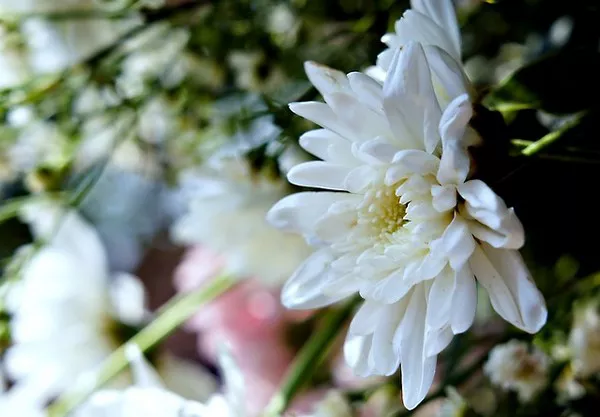Flowers have long held a significant place in human culture, serving as expressions of beauty, love, celebration, and even sorrow. One of the most intriguing aspects of flower symbolism is their association with death and mourning. Across various cultures and throughout history, flowers have played a role in commemorating and honoring the deceased. This article delves into the intricate symbolism of flowers in the context of death, shedding light on their cultural, emotional, and psychological significance.
Cultural Variations in Flower Symbolism
The symbolism of flowers in relation to death varies widely across cultures, reflecting diverse beliefs and attitudes towards mortality. In many Western societies, lilies are commonly associated with funerals and are often seen as symbols of the resurrection and the hope for life after death. Their pure white petals evoke notions of purity, innocence, and transcendence. On the other hand, chrysanthemums, while popular as funeral flowers in some cultures, including parts of Europe, China, and Japan, are also associated with death and are used primarily for memorials. The chrysanthemum’s autumnal bloom is connected to the idea of the cycle of life and death.
In Chinese culture, white and yellow flowers, especially the white lotus, are often chosen for funerals. White symbolizes purity and mourning, while yellow represents the idea of a transition to the afterlife. Conversely, red flowers are generally avoided at funerals as they are associated with happiness and prosperity. The marigold, often used as an offering in Mexican Day of the Dead celebrations, reflects the fusion of indigenous beliefs with Catholicism, as it is believed that its strong scent helps guide the spirits of the deceased back to the world of the living.
Emotional and Psychological Significance
Flowers hold immense emotional and psychological significance in the grieving process. The act of sending or arranging flowers for a funeral serves not only as a gesture of sympathy but also as a means of offering comfort to those who mourn. The visual and olfactory qualities of flowers can create a sense of solace and beauty amidst the somber atmosphere of a funeral setting.
Research suggests that the presence of flowers can positively impact emotional well-being during times of grief. A study published in the “Journal of Environmental Psychology” in 2011 found that participants who were exposed to flowers reported feeling more positive and less anxious compared to those in a flowerless environment. The colors, shapes, and fragrances of flowers are believed to have a soothing effect on individuals, contributing to an environment conducive to mourning and remembrance.
Symbolism in the Language of Flowers
Flowers have been assigned meanings and messages in the language of flowers, also known as floriography, which was particularly popular during the Victorian era. This complex system of flower symbolism allowed people to communicate emotions and sentiments without using words. In the context of death and mourning, specific flowers were chosen to convey specific messages.
For instance, the forget-me-not symbolized remembrance and the everlasting bond with the departed, while roses, despite being generally associated with love and beauty, could carry different meanings depending on their color. A red rose symbolized love and respect for the deceased, while a white rose represented purity and innocence. In contrast, a black rose was an emblem of farewell and the end of a relationship.
Modern Interpretations and Trends
In contemporary times, the symbolism of flowers in relation to death has evolved alongside changing cultural norms and preferences. The choice of funeral flowers has become more personalized, reflecting the unique life and personality of the deceased. This shift has led to an increased use of favorite flowers, colors, and arrangements that resonate with the individual’s life and legacy.
Moreover, some individuals are exploring alternative ways to commemorate their loved ones, embracing environmentally friendly options. Biodegradable urns embedded with flower seeds allow the ashes of the deceased to nurture the growth of new life, symbolizing the cycle of life and death in a tangible manner.
Conclusion
The symbolism of flowers in the context of death is a multi-faceted and culturally rich aspect of human expression. From lilies and chrysanthemums to lotuses and marigolds, flowers play a vital role in commemorating the departed and offering solace to the bereaved. The emotional and psychological significance of flowers, along with their role in the language of flowers, contributes to the complexity of their symbolism.
As cultural norms and personal preferences continue to shape funeral rituals, the symbolism of flowers remains an integral part of the process of mourning and remembrance. Whether through traditional arrangements or innovative approaches that incorporate eco-friendly concepts, the power of flowers to convey messages of love, respect, and hope in the face of death endures as a testament to their enduring beauty and significance.


